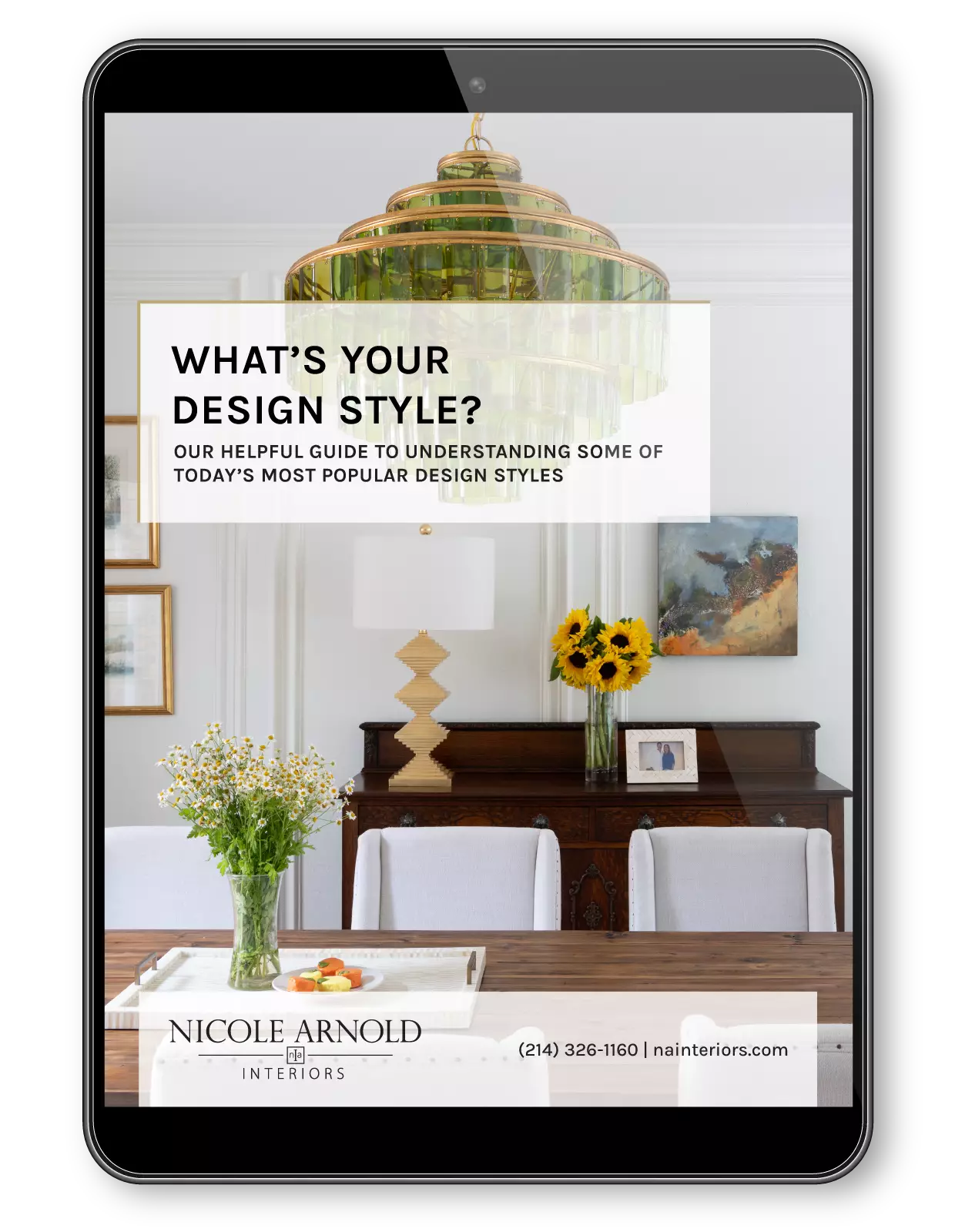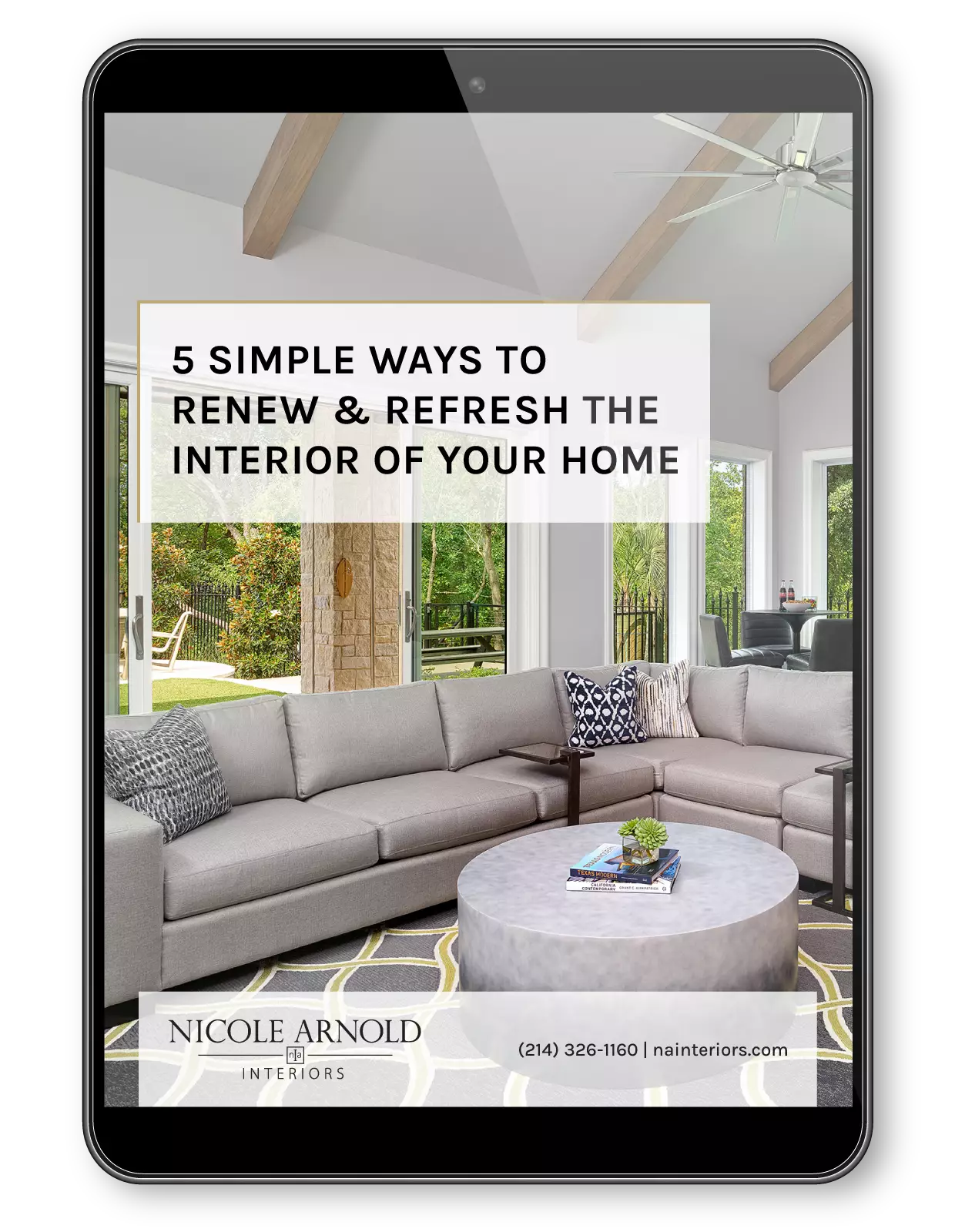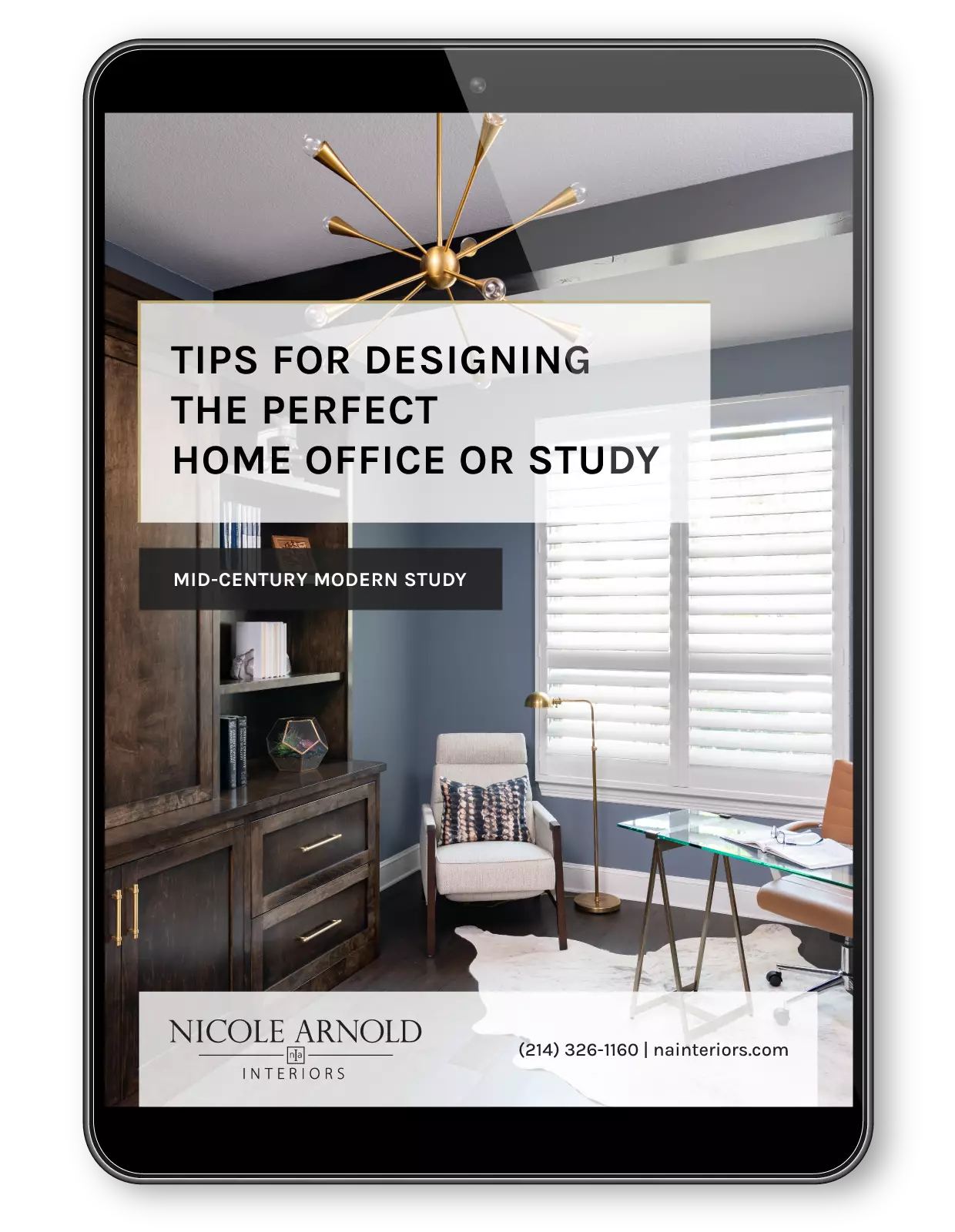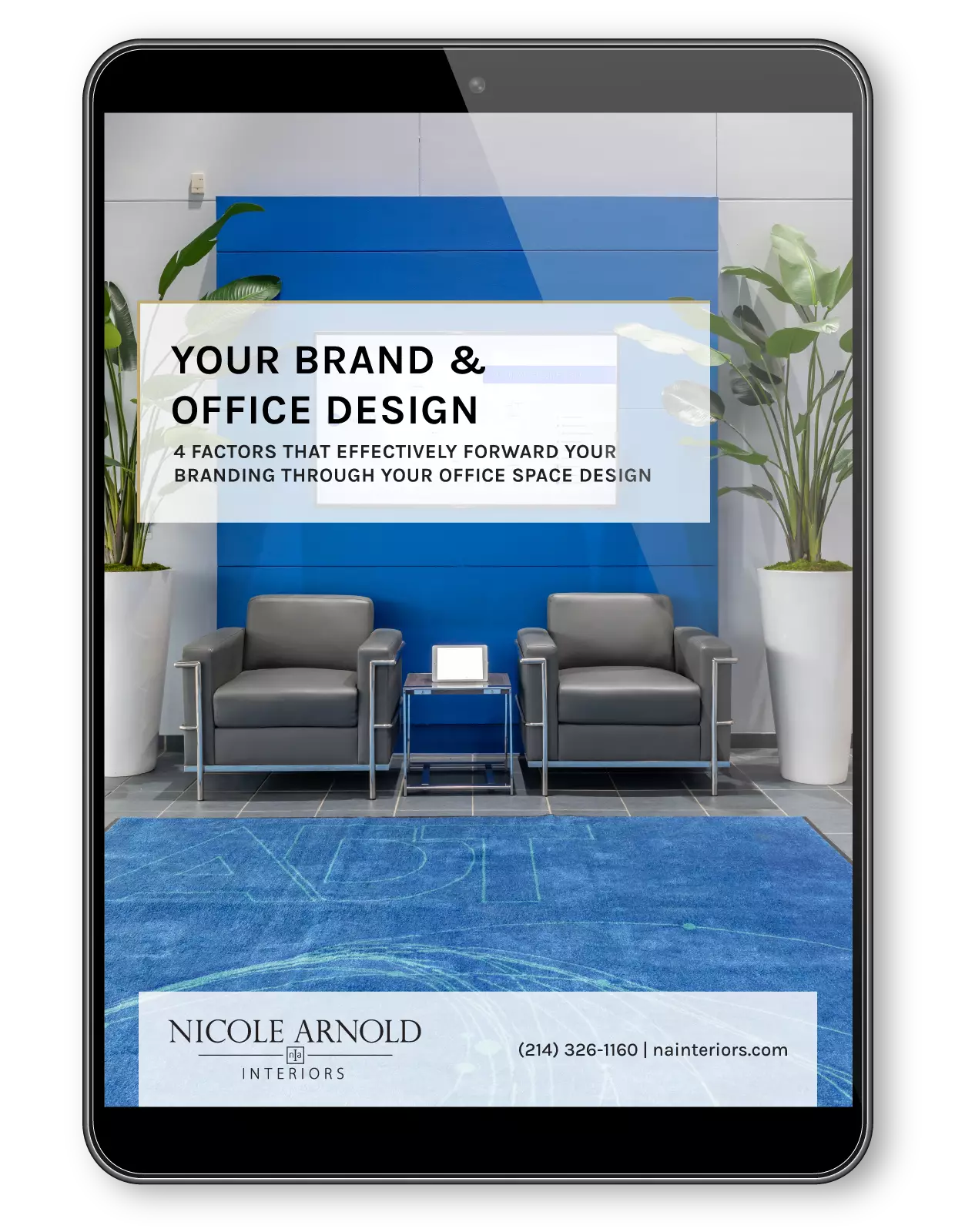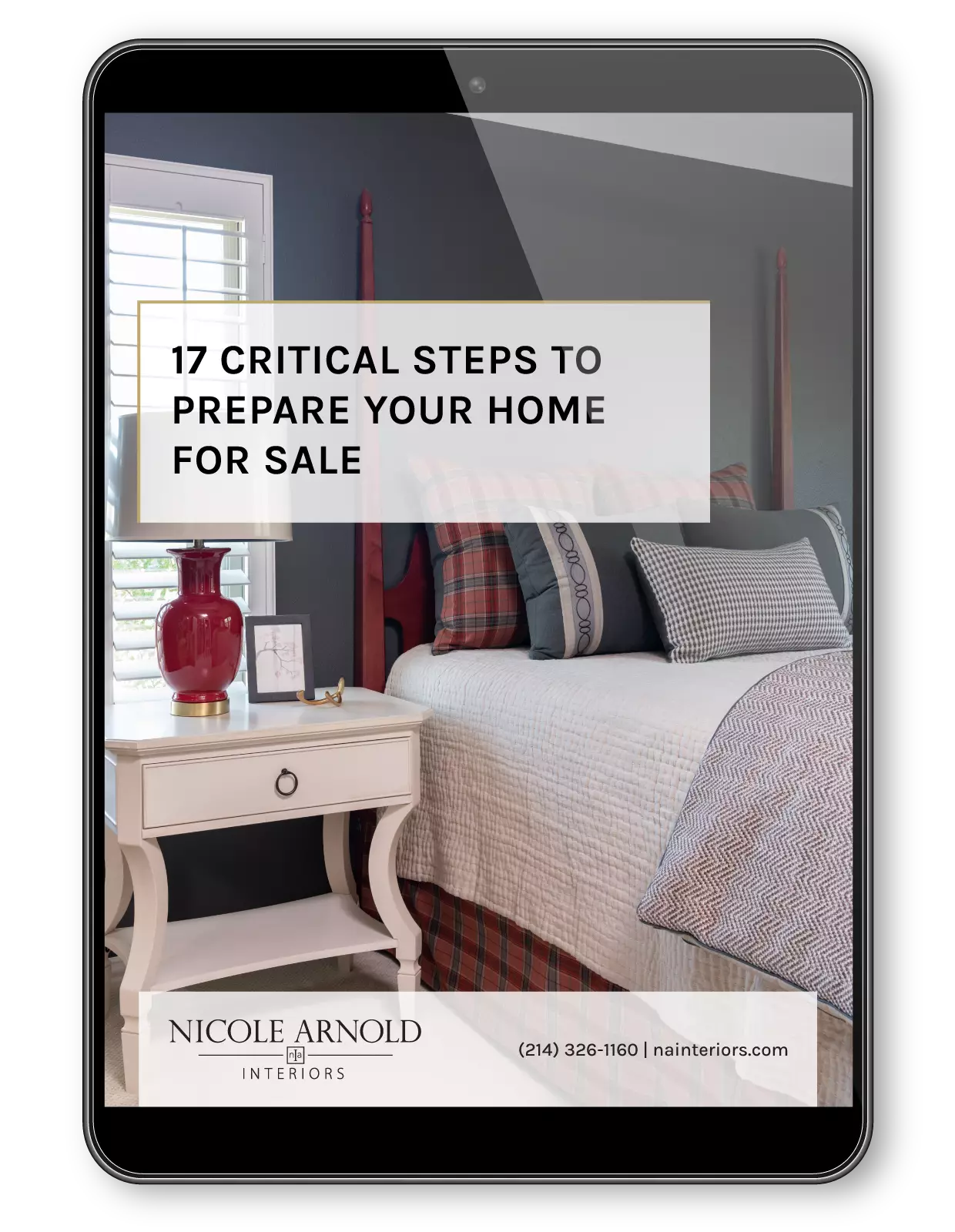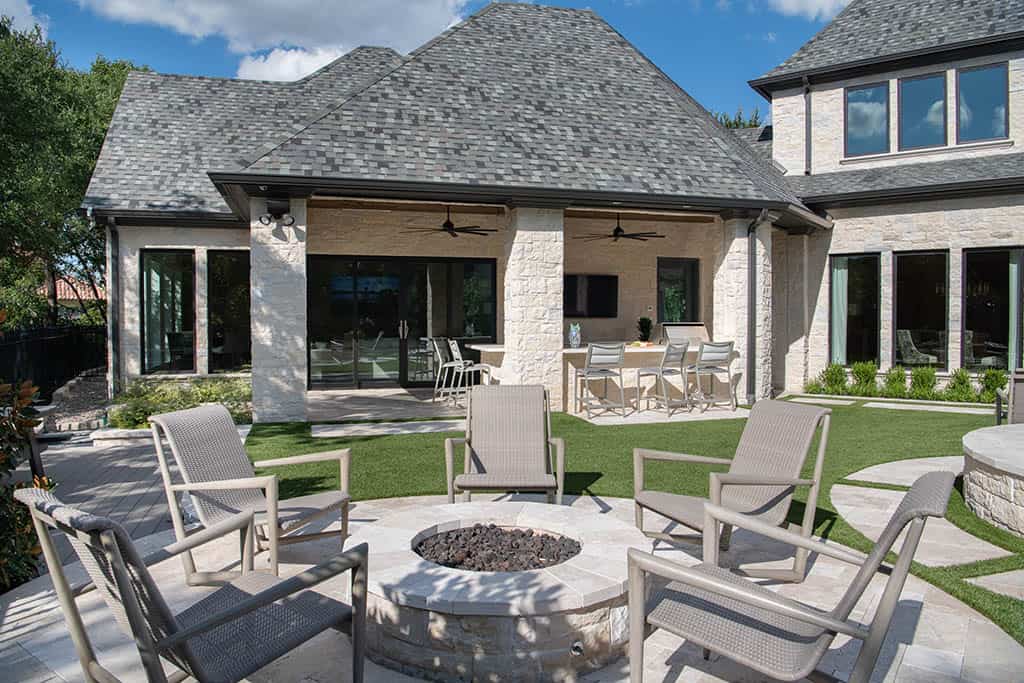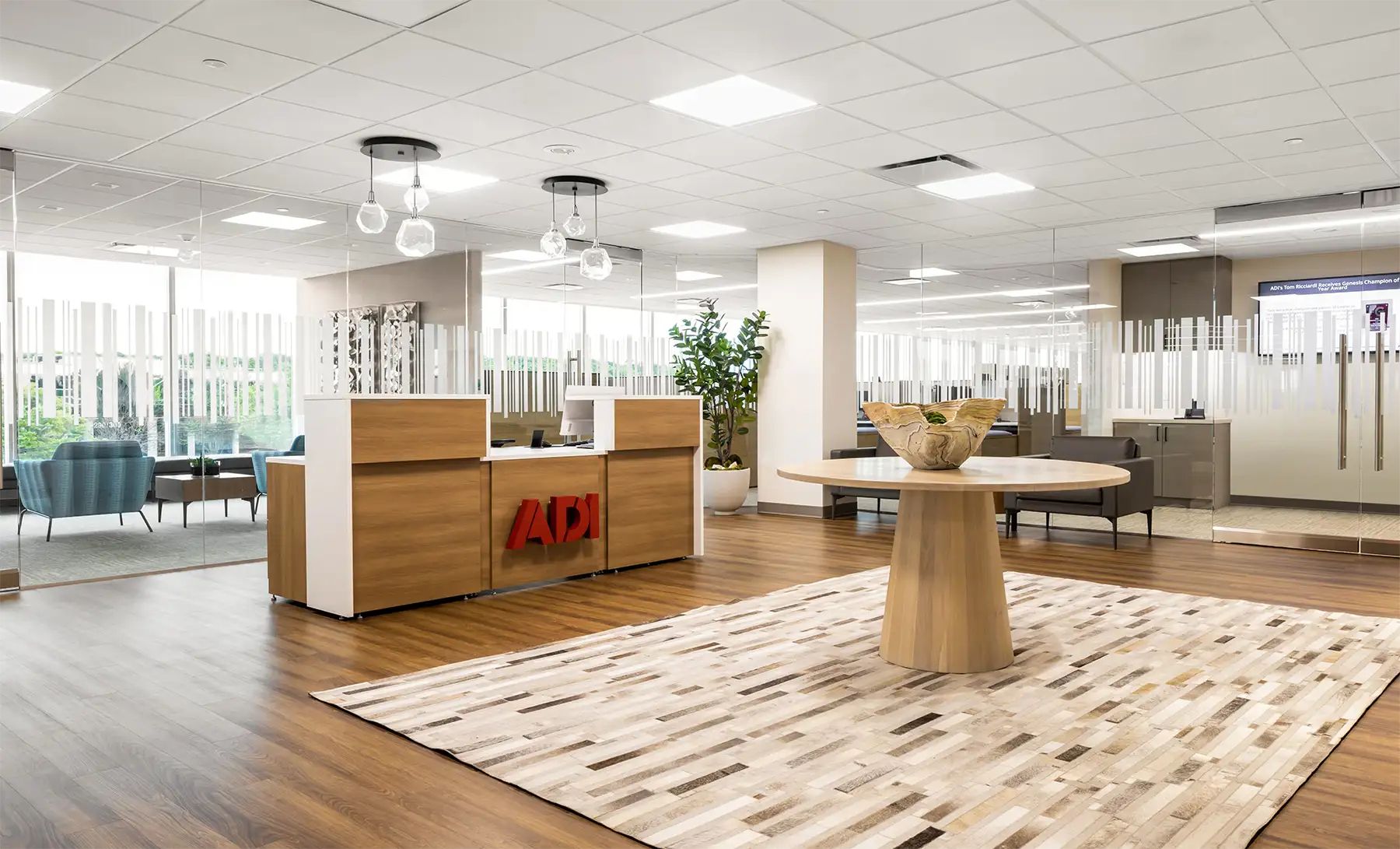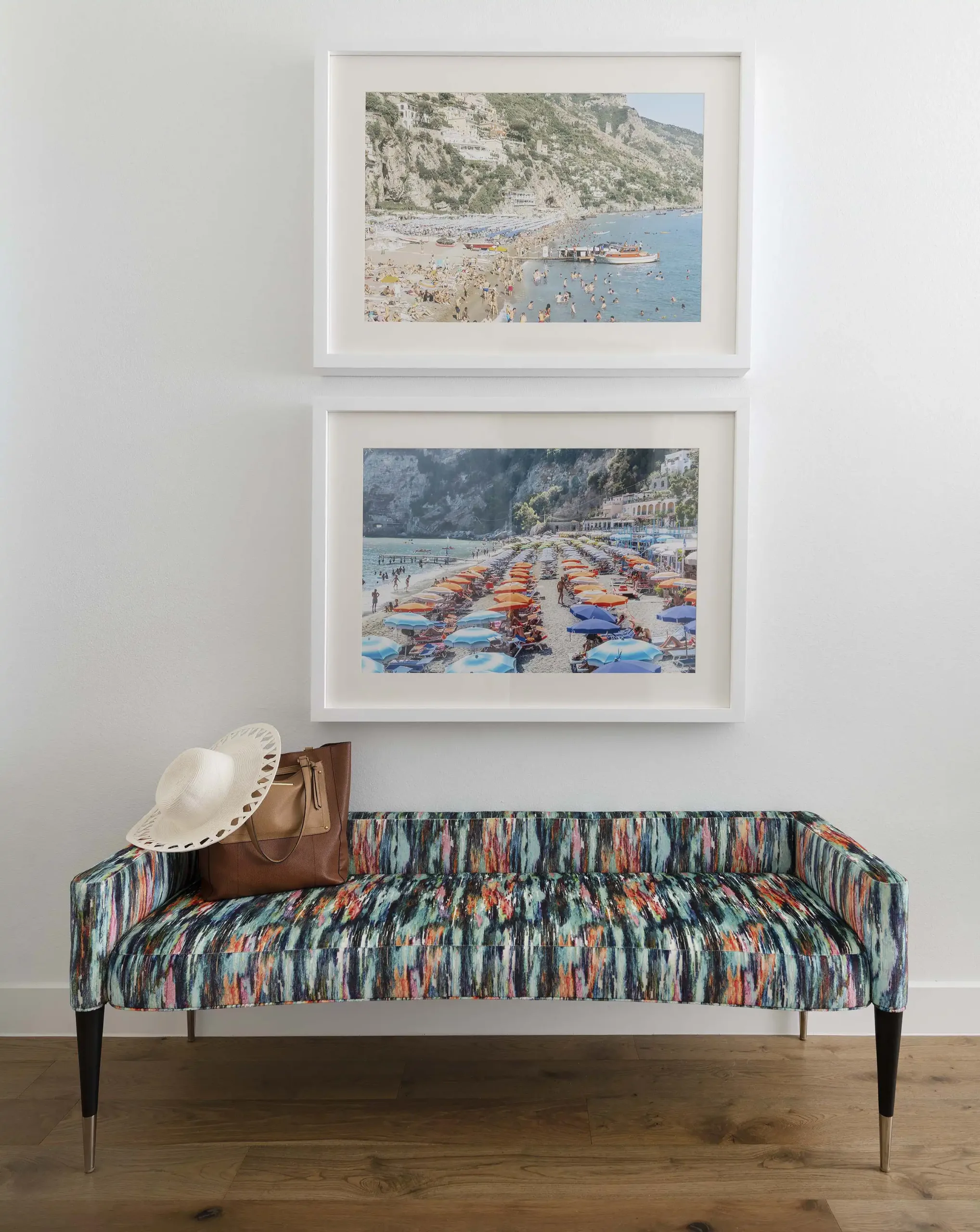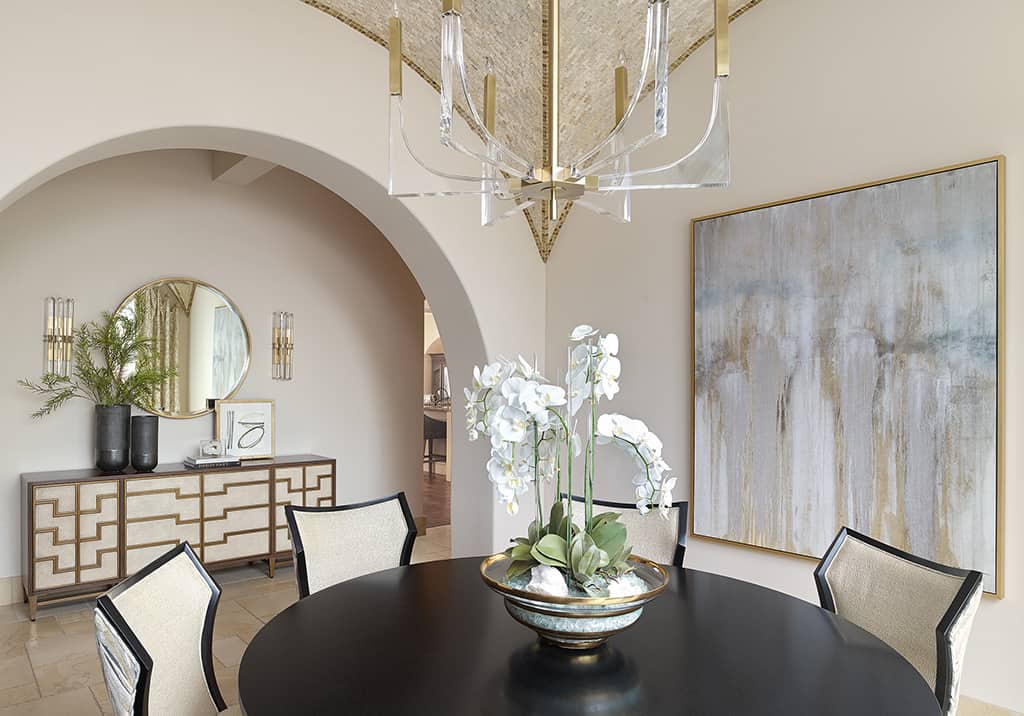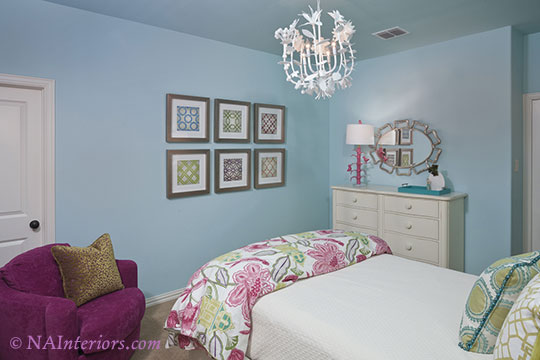
Color, groupings and balance of accessories all help to finish the look of this bedroom.
A room without accessories is like an evening gown without jewelry. The foundation looks great, but it needs to be “finished.” It feels bare.
You can have a gorgeous room arrangement and beautiful furniture, yet still miss the mark. Without the right accessories your room will seem empty. Accessories are like the exclamation point at the end of the sentence. They’re punctuation marks that help convey the nuances of what your room is trying to say.
Although the exact amount and arrangement of accessories in a room is subjective and based on personal style, here are some basic tenets to keep in mind so you don’t fall victim to “overdoing” it.
- Use color and light to your advantage.
Color and light work together to create powerful effects. For instance, in dark spaces you might want to consider reflective accessories like mirrors in order to bring a reflective quality into the room or very light colored ceramics. Avoid dark colored accessories as those show up much better in brighter spaces.
Likewise, in really bright rooms you might want to consider deeper hues to create high contrast.You can also create an interesting monochromatic look by using different shades of the same hue. For instance, if a room’s decor is centered on blue, incorporate light, medium and dark blues throughout the design and accents to create depth. - Accessorize at the end of the design process, not at the beginning.
Trying to envision a whole room at one time is difficult for most clients. They find it helpful to see it evolve in stages. Because of this, I don’t try to plan the accessories until after I’ve achieved the room layout and the furniture. It’s helpful to design the room first, then look at it to select the best accessories. - Accessorize to make the room look “finished.”
When accessorizing a room, the goal is always to make it look finished. You have to take a step back and look at the room as a whole. We’re trying to convey the personality of the client and create a space intended for a particular use. What does it need to finish it off? Maybe it needs a little shot of color in the corner. Perhaps it needs more calming or reflective qualities. Look at the room’s overall picture and decide what you need to do to make it look “finished.” - Create elegant groupings.
Mix your groupings in elegant ways to create a balanced and interesting feel. Try to use odd numbers of items when displaying accessories in a group. It also helps to vary height, shape and texture. For example, you might not want to display three different items together if they each have hard, shiny surfaces. Instead, you might mix up a shiny object with one that has a matte surface and another that is textural. On the other hand, you could display 3 of the exact same item for a graphic repeat. - Balance is everything.
Sometimes people feel like they need to fill up every available corner. However, this can easily make a room look cluttered. Remember to balance the positive and negative space to achieve the best look. What you leave out is often just as important as what you put in. Additionally, try not to overdo any one particular element or theme or its repetition will dilute its uniqueness. - Be selective with artificial plants.
If you are using artificial floral accoutrements, only purchase high-quality pieces. It’s very easy to ruin a room full of expensive furniture by using cheap florals that look like they came from a local craft store. Make sure your plants look uncompromisingly real. Succulents or evergreens tend to look more authentic, as a rule. And nothing says graceful beauty like a high-quality orchid. - Asymmetrical is good.
Go with asymmetry when you can. This prevents a room from looking repetitive and boring. It also gives accents their own spotlight, making them more noticeable. For instance, if you were creating a display on a countertop, rather than using two identical lamps on either side with a bowl in the middle, try an elegant grouping of items on the left side and a single lamp on the right side. Tastefully done, asymmetry can shape the room with a lot of personality. - Weave your personality into the room.
I always try to find a way to include pieces that have special meaning or sentimental value to the client. This really makes the room special to them, as well as adds a unique and custom feel to it. Even if they don’t “match” the rest of the décor, there is usually some way to ground them with mainstream pieces and bring them into consistency with the rest of the room.For instance, if a person has a brass statue of a Buddha and it doesn’t fit the décor as a stand alone focal point, you could group it with different colored vases and modernize it. People have off-the-wall pieces—pieces from another country that they love or family heirlooms that have been handed down. These don’t have to be avoided; they can be embraced. By properly integrating them, they’ll fit the overall look of the room and, at the same time, relay a very personal feel.
Accessories can make or break a room. Elegance, balance and personality all factor in. The goal is to add a few creative, final touches to bring all the elements together in a beautiful, cohesive picture that conveys the client’s desired result!


